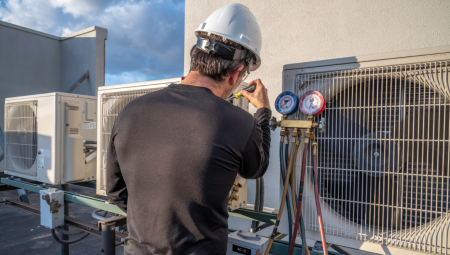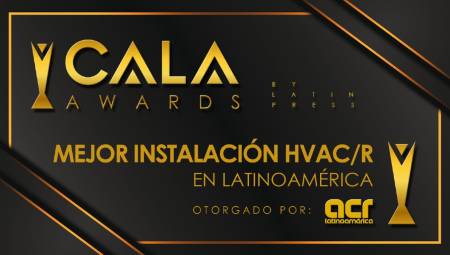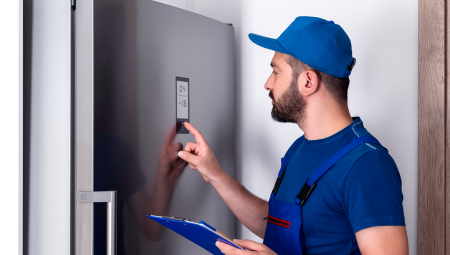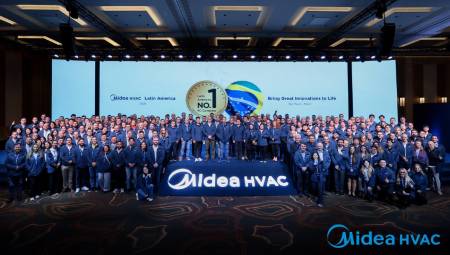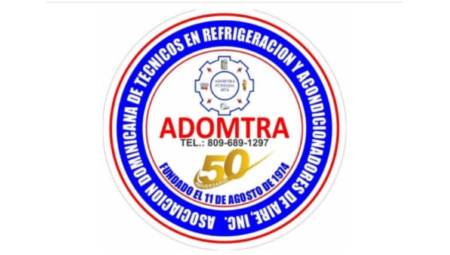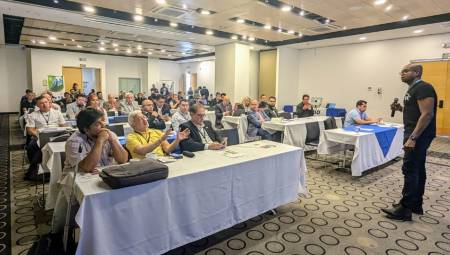 Design for Air Extraction in Kitchens
Design for Air Extraction in KitchensIn many places, the air extraction systems used in kitchens, which are connected to ducts, begins to work at the bottom of the kitchen hood, which is typically placed 1.90 meters above the floor.
The fundamental problem that most engineers face when designing an extraction system in a commercial kitchen is how much air is required and must be extracted.
In many places, the air extraction systems used in kitchens, which are connected to ducts, begins to work at the bottom of the kitchen hood, which is typically placed 1.90 meters above the floor.
Therefore, for the hood to work properly, that is, to remove heat, smell and moisture, it will depend on the upward hot air flow created by the action of cooking.
That is why the most important thing for an extraction system to operate correctly, lies in not impacting or interrupting the ascending plumula of air before it enters the hood. So we depend on gravity for polluted air to reach the bell! The extractor evacuates the bell. (See Figure 1)
 Figure 1.- There must be a supply of new air for the extractor to function properly.
Figure 1.- There must be a supply of new air for the extractor to function properly.
-
For the extractor to work under the best conditions , there must be a supply of new air! The introduction of new air into the kitchen must be achieved in such a way that we try not to impact the air extracted or that ascends to the hood. The new supply air is required to be introduced with the minimum possible speed into the kitchen.
The slightest stream of air can cause the extraction plumula not to enter the hood. Remember that cooking is all about heat! So if you focus on containing the heat you will succeed in capturing polluted air. Using pedestal fans to cool the cook will destroy the best design of the extraction system! The volume of new air shall be equal to the volume of extraction.
The volume of the exhaust air is based on the selected kitchen equipment. (See Figure 2). Higher temperature equipment such as grills will require higher volumes of exhaust air than lower temperature units such as furnaces. The general rule of thumb is for electrical equipment to be low to medium temperature, versus gas-operated equipment that is much heavier working, and solid fuel equipment is classified as extra heavy duty. The higher the level of heat produced, the greater the volume of extraction. Remember, cooking is all about heat. If you work on containing the heat you will be able to design a quality and well-functioning ventilation system.

 Figure 2.- The volume of exhaust air depends on the selected equipment.
Figure 2.- The volume of exhaust air depends on the selected equipment.
-
The last point to consider is the location of the kitchen hood. If you have an identical line of kitchen equipment, the extraction rate can be more than double depending on where the hood is placed in the kitchen. In the best case it should be placed between two walls, with a wall at the back, leaving only the front open.
The next best case will be to place a wall bell with three open sides, and in the worst case, to control the extraction plumula, it would be an island type where all four sides are open. Therefore, installing heavy-duty equipment on an island should be avoided.
To achieve excellent results it is recommended:
• Place high heat production equipment in the center of the hood.
• Maintain a space less than 8 cm behind the equipment (to the wall) to avoid leakage of the exhaust air on that side.
• To reduce the volume of exhaust air use two skirts on the open sides of the hood to avoid problems of cross drafts.
• Never use directional diffusers to supply new air (use perforated).
• Increase the depth of the hood (from front to back) to increase the space protruding from the hood with respect to the cooking equipment.
Ventilation in Professional Kitchens

Some of the most important factors to consider when designing the ventilation of a professional kitchen are: the thermal load resulting from the work of the cooking equipment, human activity and the characteristics of the enclosure; the smoke, odors and fats emanating from the various cooking processes. It is also essential to have an adequate design of the balancing of the air flows that will intervene in the system.
These places are an important challenge in terms of ventilation and air conditioning, as they involve factors that hinder the design and execution of an efficient extraction and injection project.
Some of the most important factors to consider when designing the ventilation of a professional kitchen are: the thermal load resulting from the work of the cooking equipment, human activity and the characteristics of the enclosure; the smoke, odors and fats emanating from the various cooking processes. It is also essential to have an adequate design of the balancing of the air flows that will intervene in the system.
One of the main elements in the extraction system is the Extraction Hood. This is extremely important, since it is responsible for "collecting" everything that is emanated by the cooking equipment and for directing it to the corresponding ducts. Without a good design and performance of the hood, the extraction will be deficient and as a consequence we will have a kitchen stale with smoke and impregnated with grease. A bad hood design will also cause the temperature inside the kitchen to rise quickly (see Figure 1).
Extraction hoods, therefore, cannot be designed and built lightly, without a prior study of all the factors that will intervene in their operation.

Unfortunately in our country, this has been the case. Very often we find hoods designed with non-technical criteria and without taking into account any other factor than the dimensions of the kitchen equipment, disregarding the cooking processes, which are decisive to choose the type of hood and filters necessary, as well as the additional characteristics and accessories applicable to each circumstance.
There are two types of hoods for professional kitchens: Type I and Type II. The former are used on kitchen equipment that produces masses of heat and fat. Type II is used on kitchen equipment that does not produce grease and only extracts heat and condensation.
Within the world of Type I hoods there are several categories and models, however the most efficient are those whose design allows an adequate "Capture and Containment" (see figure 2) of everything that is emanated from the cooking process. In this way it will be possible to confine the smoke, fats and to some extent, heat and odors.

Depending on the manufacturer we will find various technologies and ways to solve the problems described above. There are bells whose main objective is to compensate for the air that is extracted by the bell. Some others are designed to reduce heat and offer comfort to staff working near the hood.
The hood cannot be built without a prior study of the factors that will intervene in its operation
Of course, there are those whose main function is to prevent "disturbances" to the effluents emanating from kitchen equipment. Of all of them, those that combine several technologies to provide adequate capture and containment of smoke, heat, grease and odors, without disturbing the effluent column, and that have high efficiency mechanical filters, are the most complete and best performing, which at the same time provide significant energy savings.

In addition to having the aforementioned technologies, the hoods can be complemented with optional systems that among other things offer useful solutions to additional problems, which occur in professional kitchens. Fire systems, self-washing and banks of ultraviolet lamps are some of them.
For example, with this last option it is possible to eliminate 100% of the residual fats that manage to pass through the mechanical filters, through an ionization process that molecularly decomposes the fat, preventing it from forming again and making the ducts practically clean.
It is extremely important that the designer responsible for designing the extraction system of a professional kitchen always keep in mind that the hood is one of the most important elements of the system, so his intervention in the proper choice of the characteristics of this, is crucial for the correct functioning of the entire system, in addition to being efficient, operational and providing additional benefits for the user.
Authors:





